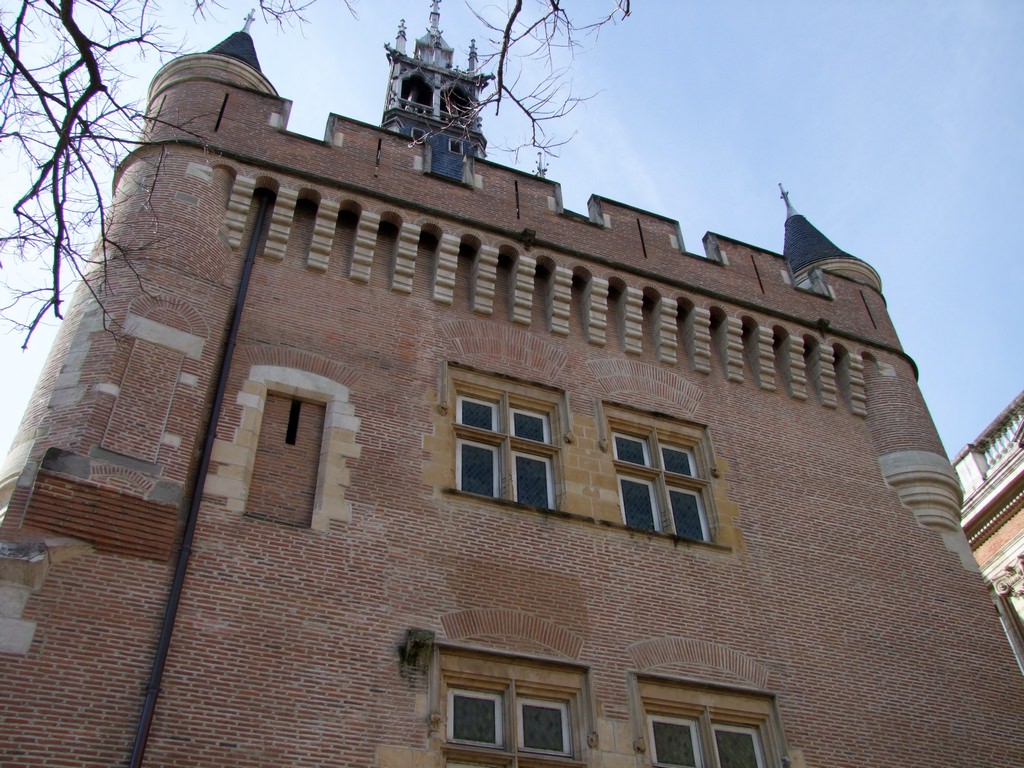
The Port de l’Embouchure
and Ponts-Jumeaux
are an iconic site of the Canal du Midi
The Port de l’Embouchure is a strategic and iconic site of the Canal du Midi, and is yet another example of the ingenious creation that is the Canal du Midi.
Port de l’Embouchure, where the Canal du Midi begins
The Port de l’Embouchure and Garonne lock
Before the side canal (Canal de Garonne) was created, boats had to continue navigation along the Garonne via the Garonne lock on a downward slope.
There's no point in looking for it! The Garonne lock and waiting basin are no longer there today. But back then, this was where boats would join onto the river before then continuing on their journey towards Bordeaux. At the waiting basin, they could transfer goods from the heavy canal barges to lighter boats that were better suited for the Garonne river.
The Garonne lock was the first to be created by Pierre-Paul Riquet. When construction work started, Pierre-Paul Riquet organised a grand ceremony. Medals struck for the occasion were inserted into the brickwork.
The construction of the Canal de Brienne
The Canal de Brienne was built between 1768 and 1775 by Joseph-Marie de Saget, to link the Garonne river and the Canal du Midi. It links the ports of Toulouse on the Garonne - upstream from Bazacle mill dam, which was a difficult obstacle for navigation - and the Port de l’Embouchure on the Canal du Midi.
When this canal was created, the Petit Gragnague bridge over the Canal du Midi was too short. It was knocked down and replaced with two identical bridges: the Ponts-Jumeaux (twin bridges).
Joseph-Marie de Saget was entrusted with the construction.
Did you know?
Just like all the other locks in Toulouse - the first ones built on the canal - Garonne lock featured straight walls. This is a contrast to the characteristic locks of the Canal du Midi which are an oval shape. But it was only after the construction of Castanet lock that this shape became standard.
The construction of the Canal de Garonne to reach Bordeaux
In 1834, the Port de l’Embouchure was extended and took on its current appearance. This work was carried out in preparation for construction work on the future Canal de Garonne.
The Canal de Garonne made navigation much easier and safer for boats travelling to Bordeaux. When the canal first opened in 1856, skippers chose to use this passage instead, and the Garonne lock began to fall into ruin.
The construction of protective barriers against floods in around 1960 marked the end of this passage towards the river.
Ponts-Jumeaux, historic monuments both for Toulouse and for the Canal du Midi
1776: inauguration of the Ponts-Jumeaux
The first bridge was completed in 1771, and the second in 1774. The whole structure was inaugurated in 1776.
The Ponts-Jumeaux symbolise the Canal du Midi and the Canal de Brienne. Each bridge features an arch in a sort of elliptical three-point curve, with a keystone and stone bandeau to support the parapet, the cornice and the external arch of the vaults. They were was added to the list of Historic Monuments on 1967!
Representatives of the Province of Languedoc provided the financing for construction of the Ponts-Jumeaux.
To celebrate the union of the Canal du Midi and the Garonne, a huge marble bas-relief was commissioned from the sculptor from Toulouse, François Lucas, to decorate the Ponts-Jumeaux at the entrance to the canal.
Did you know?
In 1838, the creation of the Canal de Garonne meant that a third bridge needed building, around thirty metres north-west of the bridge over the Canal du Midi. This last bridge was designed to be identical to the other two. But the curved brick wall that linked it to the second bridge was not decorated. This 3rd bridge was connected to the other two and enlarged the port, giving it a hemicycle shape.
The Ponts-Jumeaux bas-relief
The Ponts-Jumeaux bas-relief is a unique work of art! It is sculpted into blocks of marble and is 25 metres long, making it the icon of the Ponts-Jumeaux.
This artwork created by François Lucas in 1775 is in fact an allegory. Look at the bearded man on the left! He represents the Canal du Midi. On his right, there are two young figures with pickaxes, building a lock. At the centre, the province of Languedoc is holding the rudder of a boat featuring the Languedoc coat-of-arms. She is pointing, ordering the canal to receive the waters of the Garonne. The Garonne is holding the horn of plenty and encouraging a young labourer to get their cattle moving, to form the channel in the Lauragais. In the background, you can make out the sail of a boat and the buildings of Toulouse.
The Ponts-Jumeaux bas-relief therefore symbolises the union of the Canal de Languedoc, the former name of the Canal du Midi, and the Garonne. It is listed as a Historic Monument.

Bas relief des ponts-jumeaux - VNF, Sylvain Cambon
1970: a new identity for the Port de l’Embouchure and the Ponts-Jumeaux
From the 1970s, the Port de l’Embouchure was redesigned. The creation of a ring-road and interchanges meant that this site needed to be modified. The size of the basin was reduced and the Garonne lock was demolished, along with the lock keeper's house and storage buildings on the docks.
The bridge over the Canal de Brienne was modified to accommodate one-way traffic and provide the link between the Port de l’Embouchure with the Boulevard de la Marquette, on the south banks of the Canal du Midi. The bridge over the Canal de Garonne was enlarged on the outer side to 22 metres, in the 19th century style with a segmental arch between two pillars, all made from brick. As for the bridge over the Canal du Midi, it could now only be used by pedestrians and cyclists.
The Port de l'Embouchure is one of the two river ports in Toulouse. The trade of goods has now been replaced with economic and cultural activities for visitors, locals and tourists, on boats that are permanently moored at the docks, and boats used for boat trips.
Contact Toulouse Tourist Office
Contact
and information
TOURIST OFFICE OF TOULOUSE / ATTRACTIVITY AGENCY OF TOULOUSE METROPOLE Square Général de Gaulle
BP 38001
31080 TOULOUSE
Tél : 05 17 42 31 31





















